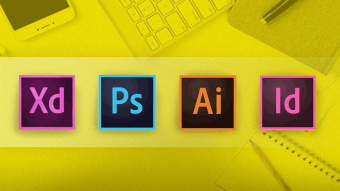Learn Fundamentals Of Networks From Scratch
Tags: Computer Network
Learn all the Fundamentals of Computer Networks and how systems communicate in Network. Road towards CCNA
Last updated 2022-01-10 | 3.8
- Different terminologies used in the field of Computer Networking.- Learn basics to go further upto CCNA
- Networking transmission media and there types
What you'll learn
* Requirements
* Basic understanding of computers* An urge to learn
Description
- Different terminologies used in the field of Computer Networking.
- Learn basics to go further upto CCNA
- Networking transmission media and there types
- Protocol Stacks used for Networking Industry
- Describe computer networks and identify key components of networks
- OSI and TCP/IP model- layered Architectures
- Information Security - Introduction to basics of Information Security
- Domain Name System(DNS) - Working with example
- Mux and Demux
- Topologies - Ring Mesh Star Bus Hybrid
- Switching techniques
Course content
8 sections • 23 lectures
Introduction Preview 02:09
Hi, this section gives you an idea of Instructor and about the topics of Computer networks that i am gonna teach in this whole course. Also i have one downloadable file having course content of Computer Networks that i am gonna teach in thia course.
Basics of Computer Networks: Networking fundamentals Preview 14:38
A computer network is a group of devices connected with each other through a transmission medium such as wires, cables etc. These devices can be computers, printers, scanners, Fax machines etc. The purpose of having computer network is to send and receive data stored in other devices over the network.
IT Networking Fundamentals : Topologies of the network | Computer networking Preview 30:39
Network topology is the arrangement of the elements of a communication network. Network topology can be used to define or describe the arrangement of various types of telecommunication networks, including command and control radio networks, industrial fieldbusses and computer networks.
IT Networking Fundamentals (Computer Networking): Types of Networks Preview 18:17
The Network allows computers to connect and communicate with different computers via any medium. LAN, MAN and WAN are the three major types of the network designed to operate over the area they cover. There are some similarities and dissimilarities between them. One of the major differences is the geographical area they cover, i.e. LAN covers the smallest area; MAN covers an area larger than LAN and WAN comprises the largest of all.
Computer Networking : Computer Networks : Data Communications Preview 11:44
Data communications refers to the transmission of this digital data between two or more computers and a computer network or data network is a telecommunications network that allows computers to exchange data. The physical connection between networked computing devices is established using either cable media or wireless media. The best-known computer network is the Internet.
IT Networking Fundamentals | Computer Network: Multiplexing and De-Multiplexing Preview 15:33
The major factor that differentiates multiplexer and demultiplexer is their ability to accept multiple input and single input respectively. The multiplexer also known as a MUX operates on several inputs but provide a single output. As against demultiplexer also known as DEMUX simply reverses the operation of MUX and operates on single input but transmits the data to multiple outputs.
It is noteworthy here that multiplexer acts as data selector thus provide a single output from several inputs. However, demultiplexer acts as a data distributor and generates several outputs with a single input.
IT Networking Fundamentals | Computer Network : Communication Channels Preview 12:03
A communication channel refers either to a physical transmission medium such as a wire, or to a logical connection over a multiplexed medium such as a radio channel in telecommunications and computer networking. A channel is used to convey an information signal, for example a digital bit stream, from one or several senders (or transmitters) to one or several receivers. A channel has a certain capacity for transmitting information, often measured by its bandwidth in Hz or its data rate in bits per second.
Communicating data from one location to another requires some form of pathway or medium. These pathways, called communication channels, use two types of media: cable (twisted-pair wire, cable, and fiber-optic cable) and broadcast (microwave, satellite, radio, and infrared). Cable or wire line media use physical wires of cables to transmit data and information. Twisted-pair wire and coaxial cables are made of copper, and fiber-optic cable is made of glass.
IT Networking Fundamentals | Computer Network : Transmission Media Preview 07:47
Transmission media is a communication channel that carries the information from the sender to the receiver. Data is transmitted through the electromagnetic signals. The main functionality of the transmission media is to carry the information in the form of bits through LAN(Local Area Network).
IT Networking Fundamentals | Computer Network : Guided Media Preview 09:41
Guided media, which are those that provide a conduit from one device to another, include twisted-pair cable, coaxial cable, and fiber-optic cable. A signal traveling along any of these media is directed and contained by the physical limits of the medium.
IT Networking Fundamentals | Computer Network : UnGuided Media Preview 06:35
An unguided transmission transmits the electromagnetic waves without using any physical medium. Therefore it is also known as wireless transmission. In unguided media, air is the media through which the electromagnetic energy can flow easily.
Computer Networking | Networking : Introduction to Protocol Stacks/Models Preview 17:14
The protocol stack or network stack is an implementation of a computer networking protocol suite or protocol family. Some of these terms are used interchangeably but strictly speaking, the suite is the definition of the communication protocols, and the stack is the software implementation of them.
IT Networking Fundamentals | Computer Network : OSI Model Preview 15:22
The Open Systems Interconnection model is a conceptual model that characterizes and standardizes the communication functions of a telecommunication or computing system without regard to its underlying internal structure and technology.
IT Networking Fundamentals | Computer Network : TCP/IP Model Preview 15:41
TCP/IP Reference Model is a four-layered suite of communication protocols. ... Internet Layer −It defines the protocols for logical transmission of data over the network. The main protocol in this layer is Internet Protocol (IP) and it is supported by the protocols ICMP, IGMP, RARP, and ARP
IT Networking Fundamentals | Computer Networking : Addressing Preview 26:35
To uniquely identify each host or computer or device participating in network. This is called addressing. To be able to connect and move data packets between any devices in a network. This is often called switching and routing by connecting devices to switches and routers respectively.
IT Networking Fundamentals | Computer Networking : Switching Preview 09:39
Switching is the process to forward packets coming in from one port to a port leading towards the destination. When data comes on a port it is called ingress, and when data leaves a port or goes out it is called egress. A communication system may include a number of switches and nodes.
IT Networking Fundamentals | Computer Network : Packet Switching Preview 16:19
Packet switching is the transfer of small pieces of data across various networks. These data chunks or “packets” allow for faster, more efficient data transfer. Often, when a user sends a file across a network, it gets transferred in smaller data packets, not in one piece.
GATE CSE CCNA :- Introduction to IP Addressing Preview 14:52
Computer Network Basics:- Different Versions of IP | IP4 vs IP6. Preview 09:45
Computer Networking:- IP Addressing and Subnetting course Preview 00:14
IT Networking Fundamentals | Computer Network : Domain Name System Preview 20:53
The Domain Name System is a hierarchical and decentralized naming system for computers, services, or other resources connected to the Internet or a private network. It associates various information with domain names assigned to each of the participating entities.
IT Networking Fundamentals | Computer Networking : Communication Devices Preview 10:35
A communication device is a hardware device capable of transmitting an analog or digital signal over the telephone, other communication wire, or wirelessly.
A classic example of a communication device is a computer modem, which converts a computer's digital information to an analog signal for transmission over a telephone line. Similarly, a modem receives analog signals, and converts them to digital, for processing by the computer. This process is called modulation/demodulation, from which the modem gets its name.
IT Networking Fundamentals | Computer Network : Information Security Preview 18:40
Information Security is basically the practice of preventing unauthorized access, use, disclosure, disruption, modification, inspection, recording or destruction of information. ... Confidentiality – means information is not disclosed to unauthorized individuals, entities and process.








 This course includes:
This course includes:















